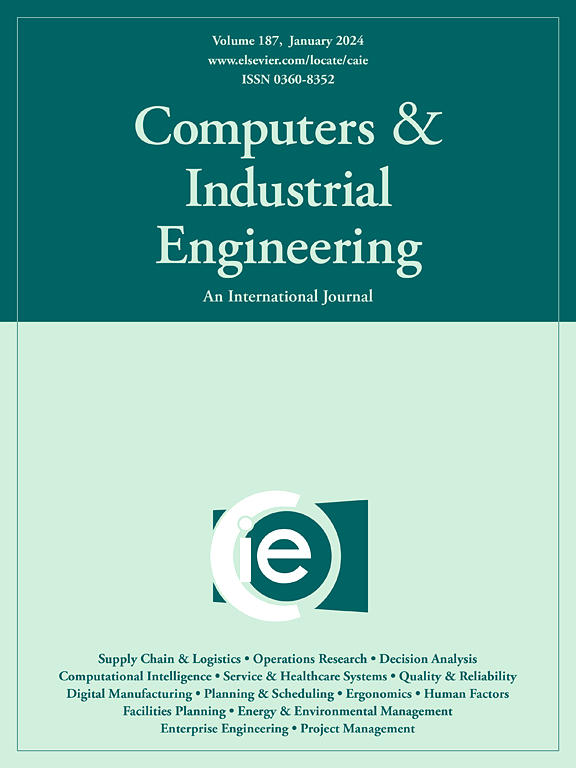具有个性化需求响应和风电不确定性的机组承诺高效随机优化
IF 6.7
1区 工程技术
Q1 COMPUTER SCIENCE, INTERDISCIPLINARY APPLICATIONS
引用次数: 0
摘要
传统的需求响应(DR)策略往往忽略了灵活的用户效用,导致DR能力的低参与度和未充分利用,无法有效管理高渗透风电。为了解决这些问题,本文简要介绍了由两类个体调整因子(IAF)形成的可变用户效用函数,并提出了个性化DR (PDR)策略,该策略考虑了用户固有的响应偏好和环境动态响应,深度细化了用户效用。此外,通过引入改进的多视觉机制(MVM)和并行化技术,提出了一种强大的并行群搜索优化器(PGSO)算法,以解决大规模电力系统的复杂性问题。最后,通过对包含风电不确定性的IEEE 118系统进行建模,将其作为PDR (UCPDR)优化模型进行单元承诺,验证了所提方法的有效性。四种情景的仿真结果表明,采用PDR策略后,不仅平均效用牺牲比基线情景降低了约9.70%,而且燃料成本也降低了0.66%。此外,与差分进化(DE)、遗传算法(GA)、粒子群优化(PSO)和协方差矩阵自适应进化策略(CMAES)等传统随机优化算法相比,PGSO算法在避免局部最优和改善系统各项指标方面表现更好。值得注意的是,在高达3.15 × 109次的评估中,PGSO算法仅用8.01 s就完成了计算,计算速度分别提高了98.53%、98.15%、99.23%和99.98%。总之,所提出的方法提供了更灵活和以用户为中心的能源管理,有效地解决了现实世界的挑战。本文章由计算机程序翻译,如有差异,请以英文原文为准。
High-efficiency stochastic optimization for Unit Commitment with personalized demand response and wind power uncertainty
Traditional demand response (DR) strategies often overlook flexible user utility, resulting in low engagement and underutilization of DR’s capacity to manage high-penetration wind power effectively. To address these issues, this brief introduces the variable user utility functions formed by two types of individual adjustment factors (IAF) and proposes personalized DR (PDR) strategies that deeply refine user utility, taking into account users’ inherent response preferences and environmental dynamic responses. Furthermore, by introducing an improved multi-visual mechanism (MVM) and parallelization techniques, this paper presents a powerful Parallel Group Search Optimizer (PGSO) algorithm to address the complexities of large-scale power systems. Ultimately, the efficiency of the proposed methods is validated through modeling the IEEE 118 system that includes the uncertainty of wind power, as a unit commitment with PDR (UCPDR) optimization model. The simulation results for four scenarios show that after the development of the PDR strategies, not only has the average utility sacrifice decreased by approximately 9.70% compared to the baseline scenario, but the fuel cost has also been reduced by 0.66%. In addition, compared to traditional stochastic optimizers, including differential evolution (DE), genetic algorithm (GA), particle swarm optimization (PSO), and covariance matrix adaptation evolution strategy (CMAES), the PGSO algorithm performs better in avoiding local optima and improving various system indicators. It is worth noting that, among up to 3.15 × 109 evaluations, the PGSO algorithm completed its computation in just 8.01 s, demonstrating computational speed improvements of 98.53%, 98.15%, 99.23%, and 99.98%. In conclusion, the proposed approach offers more flexible and user-centric energy management, effectively addressing real-world challenges.
求助全文
通过发布文献求助,成功后即可免费获取论文全文。
去求助
来源期刊

Computers & Industrial Engineering
工程技术-工程:工业
CiteScore
12.70
自引率
12.70%
发文量
794
审稿时长
10.6 months
期刊介绍:
Computers & Industrial Engineering (CAIE) is dedicated to researchers, educators, and practitioners in industrial engineering and related fields. Pioneering the integration of computers in research, education, and practice, industrial engineering has evolved to make computers and electronic communication integral to its domain. CAIE publishes original contributions focusing on the development of novel computerized methodologies to address industrial engineering problems. It also highlights the applications of these methodologies to issues within the broader industrial engineering and associated communities. The journal actively encourages submissions that push the boundaries of fundamental theories and concepts in industrial engineering techniques.
 求助内容:
求助内容: 应助结果提醒方式:
应助结果提醒方式:


